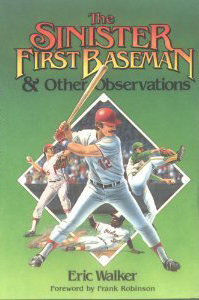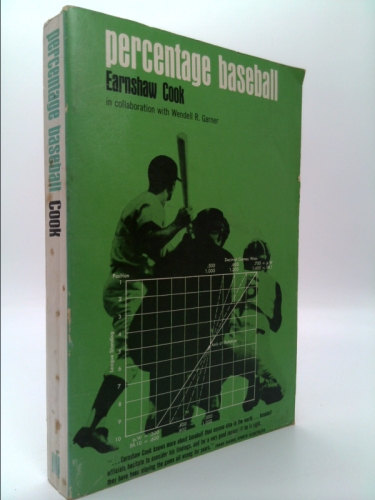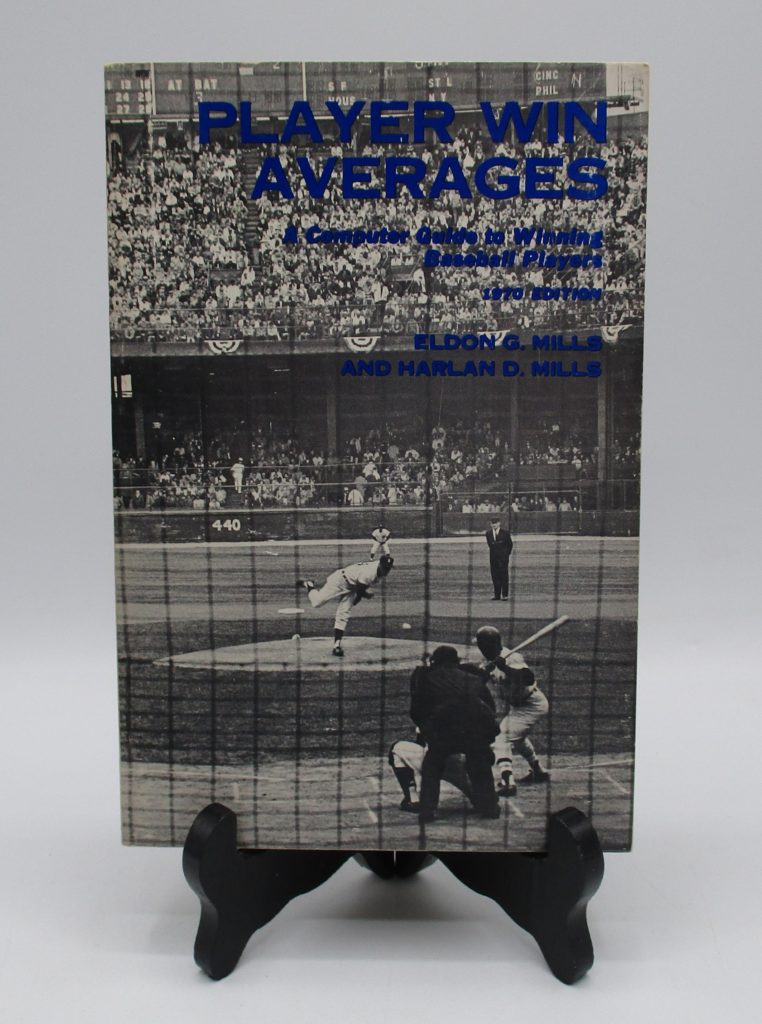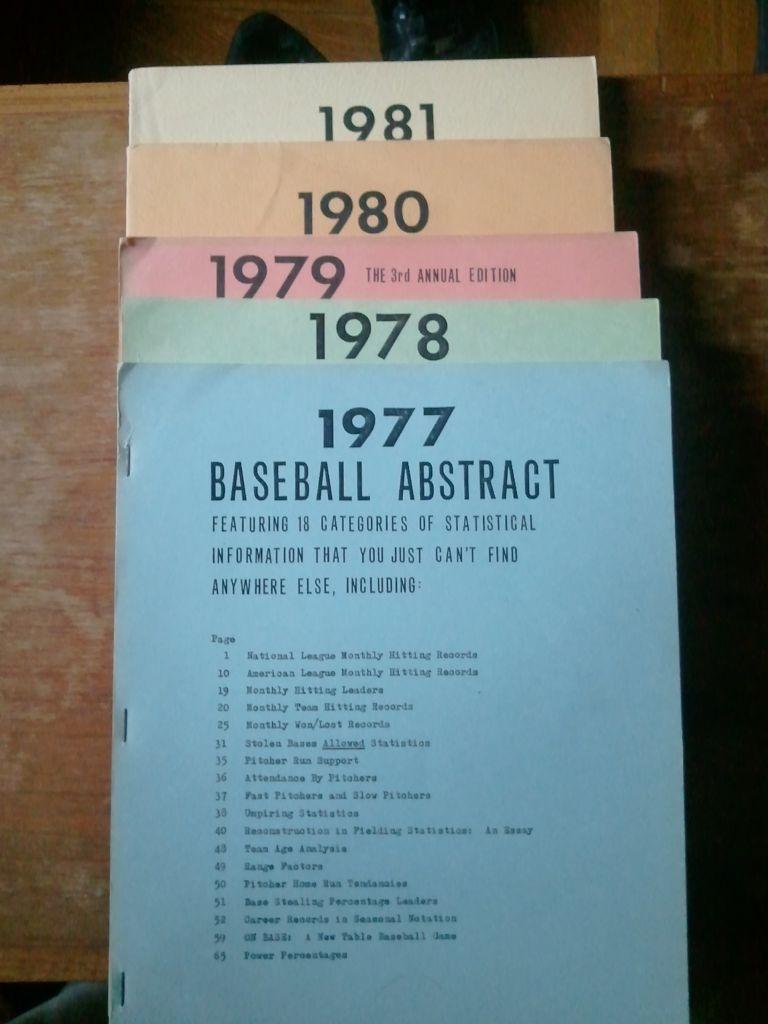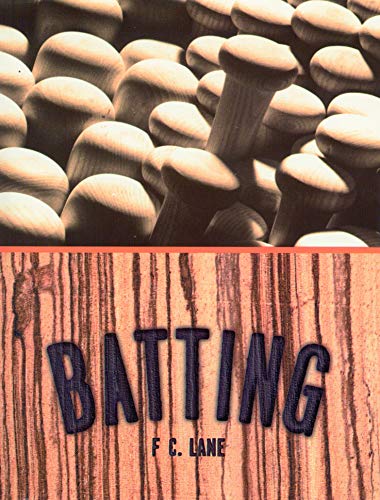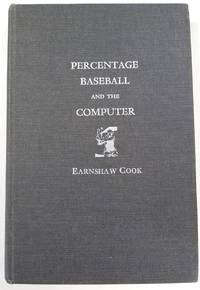The modern adoption of analytics in baseball can be traced back to vintage baseball analytics books.
Moneyball: The Art of Winning an Unfair Game by Michael Lewis introduced many fans to the concept of sabermetrics and Bill James. But did you know that he wrote an annual book series starting in 1977 called, Baseball Abstract?
Have you heard of Eric Walker? He’s the forgotten man in the Moneyball movie. He wrote The Sinister First Baseman, the book that actually inspired the Oakland Athletics to have him write the famed “whitepaper” mentioned in the movie.
In the 1960s, Earl Weaver would be inspired by the Baltimore mathematician Earnshaw Cook’s Percentage Baseball. And a couple of generations before that, Baseball Magazine editor F.C. Lane created a new statistical method that measured offensive production which resulted in his famed book, Batting.
It’s the vintage baseball analytics books that came before Moneyball that had the most profound impact on the modern landscape of baseball. So here’s our handpicked list of books that we think you should know about:
Vintage Baseball Analytics Books That Shaped Modern Baseball
#1. The Sinister First Baseman & Other Observations (1982)
The Sinister First Baseman & Other Observations
by Eric Walker
Eric Walker is a groundbreaking figure in baseball analytics, best known for his influential work with the Oakland Athletics during the 1980s. He introduced data-driven strategies and concepts, particularly focusing on under-appreciated player skills such as on-base percentage, that fundamentally shaped what would later be dubbed “Moneyball.” However, despite his key contributions to the Athletics’ success, Walker was notably absent from the movie adaptation of Michael Lewis’s book “Moneyball,” which primarily spotlighted the efforts of General Manager Billy Beane.
Prior to his tenure with the Athletics, Walker wrote a seminal book titled “The Sinister First Baseman,” which, while not specifically focused on analytics, presented a thoughtful and incisive exploration of the game, its players, and its culture. This book showcased Walker’s profound understanding of baseball, which later proved instrumental in his development of pioneering analytical concepts.
Walker’s impact extends far beyond his stint with the Athletics. His approach to analytics served to bridge the gap between traditional baseball wisdom and data-driven evaluation, changing the paradigm of player performance assessment. His teachings demystified complex statistical concepts, making them more accessible and applicable to baseball executives, scouts, and coaches.
In his insightful two-part series, “The Forgotten Man Of Moneyball,,” Walker details his contributions to the Athletics, addresses misconceptions surrounding “Moneyball,” and shares his views on the progression of baseball analytics. This series, along with “The Sinister First Baseman,” exemplifies Walker’s significant influence on baseball and its embrace of data analytics.
#2. Percentage Baseball (1966)
Percentage Baseball
by Earnshaw Cook
Widely considered to be the first book on baseball metrics, Earnshaw Cook’s groundbreaking analysis challenges traditional beliefs about sacrifice bunts, relief pitchers, batting orders, hit and run plays, and even the standardization of baseball itself. Despite initial controversy, Cook’s mathematical approach accurately predicted the Baltimore Orioles’ fourth-place finish in 1964, proving the power of his scoring index and base-scoring equations. Explore this eye-opening book that challenges conventional wisdom and offers a new perspective on managing a winning team in Major League Baseball.
#3. Player Win Averages: A Computer Guide to Winning Baseball Players (1970)
Player Win Averages: A Computer Guide to Winning Baseball Players
by Eldon and Harlan D Mills
In a pioneering move after the 1970 season, brothers Eldon and Harlan Mills introduced Player Win Averages, revolutionizing baseball statistics. Eldon, a retired Air Force colonel skilled in computer programming, and Harlan, an IBM mathematics consultant and professor, devised a model to calculate win probability based on inning, score, and base-out situations. They meticulously analyzed each at-bat of the 1969 season for every batter and pitcher, entering the data on punch cards with the assistance of Elias Sports Bureau. The results were tallied, unveiling a groundbreaking approach to measuring player impact on team victories.
#4. Baseball Abstract (1977)
baseball abstract
by Bill James
Bill James authored the groundbreaking “Baseball Abstract,” a reference book that revolutionized baseball statistics. The Abstracts provided comprehensive statistics and introduced new concepts to analyze teams and players. James self-published the book annually until 1988 when he ceased its publication, leaving a lasting impact on the field of baseball analytics.
#5. Batting (1925)
Batting
by F.C. Lane
Experience the remarkable insights of F.C. Lane (1896-1984), a trailblazing editor and prolific writer for Baseball Magazine and the Little Red Book of Major League Baseball. In his visionary editorials and articles, Lane challenged conventional wisdom, advocating for different weights on batting outcomes and shedding light on the limitations of batting average. While his wisdom took time to gain recognition, Lane’s Batting remains a testament to his expertise. Originally published in 1925 and later republished by SABR, this timeless book compiles the wisdom of over 250 baseball figures, including Ty Cobb, Babe Ruth, and Casey Stengel. Lane’s interviews offer invaluable advice on selecting a bat, overcoming slumps, handling superstitions, outsmarting pitchers, and navigating media and fan pressures. Delve into the secrets and strategies shared by the game’s legends, encapsulating the essence of baseball’s rich history.
#6. Percentage Baseball And The Computer with Donald L. Fink (1971)
Percentage Baseball And The Computer
by Earnshaw Cook
Earnshaw Cook’s unheralded follow-up to Percentage Baseball.
